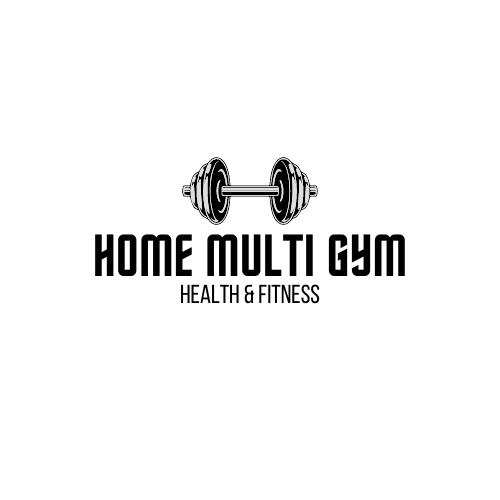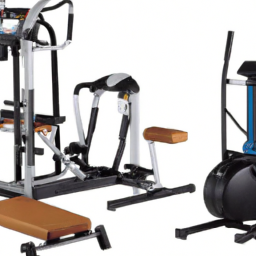Hey there! Are you thinking about investing in some exercise equipment for your home? Well, if you’re curious about how the price of a home multi-gym measures up against other options, you’ve come to the right place. In this article, we’ll explore the cost of a home multi-gym and compare it to other popular exercise equipment on the market.
If you’ve been eyeing a home multi-gym but aren’t sure if it’s worth the investment, we’ll break down the price range for you. Additionally, we’ll also discuss the benefits of owning a home multi-gym and how it compares to other exercise equipment in terms of both cost and functionality. So, whether you’re on a budget or looking to splurge on top-of-the-line equipment, this article will give you a better understanding of how the price of a home multi-gym stacks up against its counterparts. Keep reading to find out more!
What is a home multi-gym?
Definition of a home multi-gym
A home multi-gym is a piece of exercise equipment that allows you to perform a variety of different exercises in one compact machine. It typically consists of a weight stack, cables, and various attachments or stations that target different muscle groups. It is designed to replicate the functionality of a commercial gym but in the convenience of your own home.
Features of a home multi-gym
Home multi-gyms usually come with a range of features to provide a comprehensive workout experience. These may include adjustable weight stacks, pulley systems, chest presses, leg presses, cable stations, and various attachments for different exercises. Some may also have built-in cardio platforms or accessories for added versatility. The aim is to provide a compact and efficient way to train multiple muscle groups without the need for multiple machines or free weights.
Different types of exercise equipment
Overview of exercise equipment categories
Exercise equipment can be broadly categorized into several types, each with its own benefits and limitations. These categories include free weights, machines, cardio machines, and functional fitness equipment.
Common examples of exercise equipment
Free weights include dumbbells, barbells, and weight plates. Machines commonly found in commercial gyms include leg press machines, chest press machines, and lat pulldown machines. Cardio machines include treadmills, stationary bikes, and elliptical trainers. Functional fitness equipment includes items such as kettlebells, resistance bands, and suspension trainers.
Benefits and limitations of different types of exercise equipment
Free weights provide a versatile range of motion and allow for more natural movements, but they require proper form and technique to avoid injury. Machines, on the other hand, have guided movements that make them safer and easier to use, but they may limit certain ranges of motion. Cardio machines are designed to improve cardiovascular fitness and burn calories, but they are less effective for strength training. Functional fitness equipment focuses on improving overall body strength, stability, and flexibility, but may require more coordination and skill.
Price range of exercise equipment
Factors influencing the price of exercise equipment
The price of exercise equipment can vary greatly depending on several factors. These include the brand, quality, features, materials, and demand. High-end brands with advanced features and durable materials will typically command a higher price tag, while less-known brands or basic models may be more affordable.
Price comparison of various exercise equipment
When comparing the price of exercise equipment, it is important to consider the specific type of equipment and its intended use. For example, a basic set of free weights may cost less than a full home multi-gym, but it may also offer a more limited range of exercises. Similarly, a high-quality cardio machine may be more expensive than a basic treadmill. It is important to weigh the cost against the features and benefits of each type of equipment.
Specifics of a home multi-gym
Functions and versatility of a home multi-gym
A home multi-gym offers a wide range of exercises and allows for targeted muscle group training. With its various attachments and stations, you can perform exercises such as chest presses, lat pulldowns, leg extensions, bicep curls, and more. It provides versatility by allowing you to adjust the weight resistance and change the attachment to target different muscle groups. This makes it suitable for both beginners and more advanced users.
Targeted muscle groups and exercises
The targeted muscle groups and exercises will vary depending on the specific home multi-gym model and attachments. However, most home multi-gyms offer exercises for the chest, shoulders, back, arms, legs, and core. Some machines may also include features for cardio training, such as a rowing attachment or cycling platform. This allows for a full-body workout without the need for multiple machines or equipment.
Additional features and options
Home multi-gyms often come with additional features and options to enhance the workout experience. This may include built-in workout programs, digital displays for tracking progress, adjustable seats and backrests for comfort, and accessories such as ankle straps or handles for different exercises. These features can make the overall workout more engaging and enjoyable.
Pros and cons of a home multi-gym
Advantages of using a home multi-gym
- Convenience: Having a home multi-gym allows you to exercise whenever you want, without the need to travel to a gym.
- Space-saving: A home multi-gym combines multiple exercise stations into one compact machine, saving space in your home.
- Versatility: With multiple attachments and adjustable weight resistance, a home multi-gym can provide a comprehensive full-body workout.
- Privacy: Some people may prefer the privacy and comfort of working out at home rather than in a public gym.
- Long-term cost-effectiveness: While a home multi-gym may have a higher initial cost, it can save money in the long run compared to a gym membership.
Disadvantages and limitations of a home multi-gym
- Initial cost: Home multi-gyms can be more expensive upfront compared to certain types of exercise equipment.
- Space requirements: Depending on the size and model, a home multi-gym may require a dedicated space in your home.
- Limited exercise options: Although a home multi-gym offers versatility, it may not provide the same range of exercises as individual machines or free weights.
- Limited weight capacity: Some home multi-gyms may have weight limitations, preventing advanced users from achieving higher resistance levels.
- Lack of variety: Working out at home may not offer the same social interaction and motivation as exercising at a gym.
Comparing the price of a home multi-gym
Price range of home multi-gyms
The price range of home multi-gyms can vary significantly depending on the brand, quality, features, and additional accessories. Basic models can start at around $500, while more advanced models with additional features can cost upwards of $2000 or more.
Factors influencing the price of a home multi-gym
The price of a home multi-gym is influenced by various factors, including the quality of materials used, the brand reputation, the number and type of exercises it offers, the weight resistance range, and any additional features or accessories included. Higher-end home multi-gyms may include more advanced features, durable construction, and a wider range of exercise options, resulting in a higher price.
Comparison of home multi-gym prices with other exercise equipment
When comparing the price of a home multi-gym to other exercise equipment, it is important to consider the intended use and the range of exercises each piece of equipment offers. While a basic set of free weights may be more affordable upfront, it may not provide the same range of exercises as a home multi-gym. On the other hand, high-quality cardio machines or individual machines may have a similar price range or even be more expensive than a home multi-gym.
Factors to consider when purchasing exercise equipment
Individual fitness goals
When purchasing exercise equipment, it is important to consider your individual fitness goals. If you primarily want to focus on strength training and muscle building, a home multi-gym may be a suitable choice. However, if your goal is to improve cardiovascular fitness or engage in more functional fitness exercises, other types of equipment such as cardio machines or functional fitness equipment may be more appropriate.
Available space and setup requirements
Consider the available space in your home and the setup requirements of the equipment. A home multi-gym may require a dedicated room or corner of a room, whereas other types of equipment, such as free weights or functional fitness equipment, may be more compact and easier to store. Additionally, consider factors such as ceiling height and flooring requirements to ensure proper setup and safe usage.
Maintenance and durability
Consider the maintenance requirements and durability of the equipment. Higher-end home multi-gyms often come with longer warranties and are typically made from more durable materials. It is important to evaluate the quality of construction, moving parts, and any warranty or customer support offered by the manufacturer.
User experience and comfort
The user experience and comfort of the equipment should also be taken into consideration. Test the equipment for comfort and adjustability to ensure it suits your body proportions and allows for proper form. Consider factors such as padding, seat adjustments, and grip handles. A comfortable and user-friendly equipment will make your workouts more enjoyable and effective.
Long-term cost-effectiveness
Lastly, consider the long-term cost-effectiveness of the equipment. Evaluate the potential savings compared to a gym membership and the durability of the equipment. While a home multi-gym may have a higher upfront cost, it can save money in the long run, especially if you consistently use it and avoid the ongoing expense of a gym membership.
Expert opinions and customer reviews
Fitness experts’ views on home multi-gyms
Fitness experts generally agree that home multi-gyms can be an effective and convenient way to achieve a full-body workout. They highlight the versatility and convenience of having multiple exercise stations in one machine, allowing for targeted muscle group training without the need for separate equipment. However, they also emphasize the importance of proper form and technique when using a home multi-gym to prevent injuries and maximize results.
Customer reviews and testimonials
Customer reviews and testimonials can provide valuable insights into the effectiveness and satisfaction of using a home multi-gym. Look for reviews that mention the ease of use, quality of construction, range of exercises, and overall satisfaction with the product. However, keep in mind that individual experiences may vary, and it is important to consider a wide range of reviews before making a purchasing decision.
Conclusion
In conclusion, the price of a home multi-gym can vary depending on various factors such as brand, quality, features, and additional accessories. When comparing the price of a home multi-gym to other exercise equipment, it is important to consider the intended use and the range of exercises each piece of equipment offers. While a home multi-gym may have a higher upfront cost, it provides convenience, versatility, and the potential for long-term cost-effectiveness compared to other types of exercise equipment. When purchasing exercise equipment, consider your individual fitness goals, available space, maintenance requirements, user experience, and the long-term cost-effectiveness. It is also helpful to consult fitness experts’ views and read customer reviews to make an informed decision. Ultimately, the choice of exercise equipment should align with your needs and preferences to create a fulfilling and effective workout routine.

